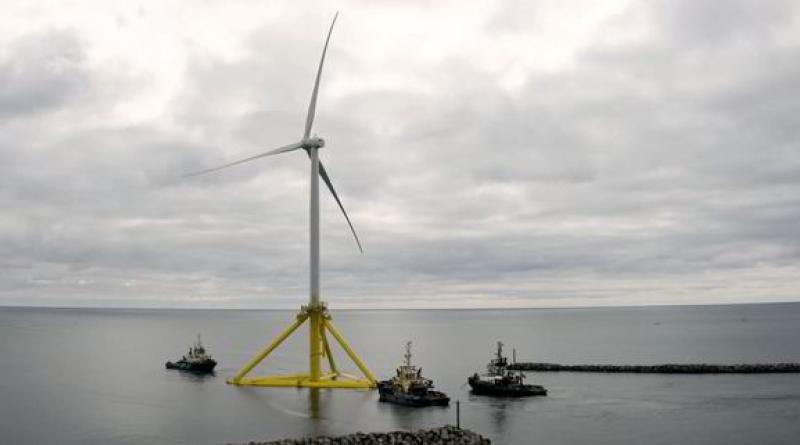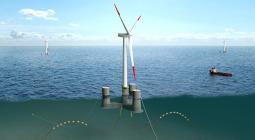New-look floating wind platform for world's largest sector project seals 'detailed design'

Next-generation version of 'industrialisation-enabling' Stiesdal Offshore TetraSpar concept moves ahead for use on 100MW North Sea project being developed by Copenhagen Infrastructure Partners
The floating wind farm on track to be the world’s largest when it comes online in 2026 has finalised a key step in its development, with “detailed design” now complete on the innovative steel foundations being used for the 100MW North Sea project.
The TetraSub platforms – a variant of the Stiesdal Offshore TetraSpar concept currently being trialled off Norway backed by European energy giants Shell and RWE and Japan’s Tepco – are in the frame to be topped-out with 15MW turbines for the Pentland Floating Offshore Wind Farm (PFOWF) being developed off the Scottish Highlands by Copenhagen Infrastructure Partners under the Highland Wind banner.
“This [TetraSub] is a next-generation… version [of the TetraSpar] based on the US NREL [National Renewable Energy Laboratory benchmark floating wind] design, so somewhat conservative at this point, but it needs to be as the [developer] hasn’t yet decided on the turbine to be used,” said Stiesdal Offshore’s head of business development Jesper Møller.
“Right now this is more about proving the design can be assembled at the speed we claim in the [relevant] ports. For more ‘mild’ [environment project] sites this will mean we can build it at 175 tonnes [of steel] per megawatt, but for rougher [environment] Scottish sites, for instance [PFOWF], it will be somewhat more than that,” he said, speaking at the Floating Wind Solutions conference in Houston, Texas.
Møller said the TetraSubs would be ready for installation “in 2024/25”.
The original TetraSpar design, the prototype of which is flying a Siemens Gamesa 3.6MW machine, is the first to be conceived around factory piece-work with the platforms assembled quayside using a weld-less process – unlike the sector’s first generation concept which are built in their entirety in port – before being mated with turbines and towed-out to site for mooring and commissioning.
The “industrialisation-enabling” concept – first revealed by Recharge in 2015 – is viewed as key for a sector shifting toward serial production and deployment in an effort to further cut cost and speed build-out in a number of maritime regions around the world.
Once operational, PFOWF, being built 7.5km off the coast of Dounreay in waters as deep as 100 metres, will power 70,000 homes.
Floating wind is central to Scottish government ambitions to build tens of gigawatts of projects in the coming decades to support its energy transition objectives, with two-thirds of the acreage awarded early in 2022 in its 26GW ScotWind auction lying in water depths that will necessitate foundations that are not the monopiles and jackets that have been the developer go-to to date.
Highland Wind last autumn publish its so-called supply chain development statement (SCDS) as developers Mainstream, Ocean Winds and ESB – which each won acreage in the ScotWind ‘clearing round’ – each released outlines for sourcing products, materials, and labour to develop 2.8GW of deepwater wind east of Shetland.
Consultancy DNV calculates floating projects currently make up over 15% of the total offshore wind deployment in the pipeline for switch-on by mid-century, equal to some 264GW of the 1,750GW slated to be installed.





